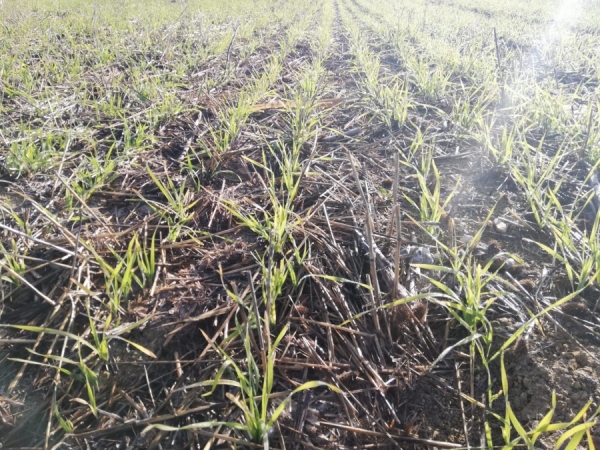Agricultural activity is responsible for about 12% of the total emissions of greenhouse gases in Spain. Nevertheless, adopting good agricultural practices can help reverse this situation, by increasing the sequestration of organic carbon in soil. With the goal of compensating for CO2 emissions produced by agricultural activity by means of fixing organic carbon in soil, the 4perMille initiative came about, in the framework of the Paris Climate Agreement (adopted at the COP21 in 2015).
Conservation Agriculture uses practices such as no-till farming (sowing without having previously tilled the soil), making use of the organic soil cover and rotating crops, which are beneficial in decreasing greenhouse gas emissions. In this vein, Rural Engineering Department Professor, at the School of Agricultural and Forestry Engineering, University of Cordoba, Emilio J. González, in the GI AGR 126 Mechanization and Rural Technology group, participated in the project working with Dr. Rafaela Ordóñez’s team, from the Agriculture and the Environment Area at the Institute of Agricultural Research and Training. They analyzed the potential of Conservation Agriculture to reach the aim of increasing organic carbon in soil by 0.4% yearly, which is the main goal of the 4perMille initiative.
Applying the Carbon Benefit Project model, designed by the UN Environment Programme, they concluded that by using no-till farming for extensive crops, carbon sequestration levels could reach up to three times the goal amount in the agreement.
After comparing the situation of conventional agriculture based on heavy tilling to data from the model based on a no-till farming situation with extensive crops (grains, sunflower, legumes, forage crops), regions appeared where carbon sequestration could triple the amount fixed by the 4permille initiative, places such as the Guadalquivir valley, Navarre, Aragon and Catalonia. With this study, Conservation Agriculture’s capacity to mitigate climate change has been scientifically contrasted, and in doing so, tools are offered up for agricultural management policies such as the European Union’s Common Agricultural Policy (CAP), which is currently undergoing debate on green aims focused on mitigation and adaptation to climate change. This study is found within the European project called LIFE Agromitiga, whose objective is to contribute to shifting towards a low-carbon farming system.
Soil conservation
In addition to increasing organic carbon sequestration, using no-till farming and other Conservation Agriculture practices means reducing soil erosion by up to 95%. In this way, the main environmental problem in this country is also being dealt with. Soil loss is especially marked in the basins of the Guadalquivir and Ebro rivers.
Large communities devoted to agriculture, therefore, will benefit greatly from applying Conservation Agriculture, which has over 700,000 ha of extensive crops in Spain, making it the European country with the greatest amount of application of these techniques.
If we continue down this path, we will not only increase the environmental advantages for the surrounding area and society, but also increase the financial feasibility of farms, farms that will keep their key production asset, soil, and will also save on work and fuel costs.
Moreno-García, M., Repullo-Ruibérriz de Torres, MA., González-Sánchez, EJ., Ordóñez-Fernández, R., Veroz-González, O., Carbonell-Bojollo, RM. (2020) Methodology for estimating the impact of no tillage on the 4perMille initiative: The case of annual crops in Spain, Geoderma, Vol 371, 114381, ISSN 0016-7061, https://doi.org/10.1016/j.geoderma.2020.114381


